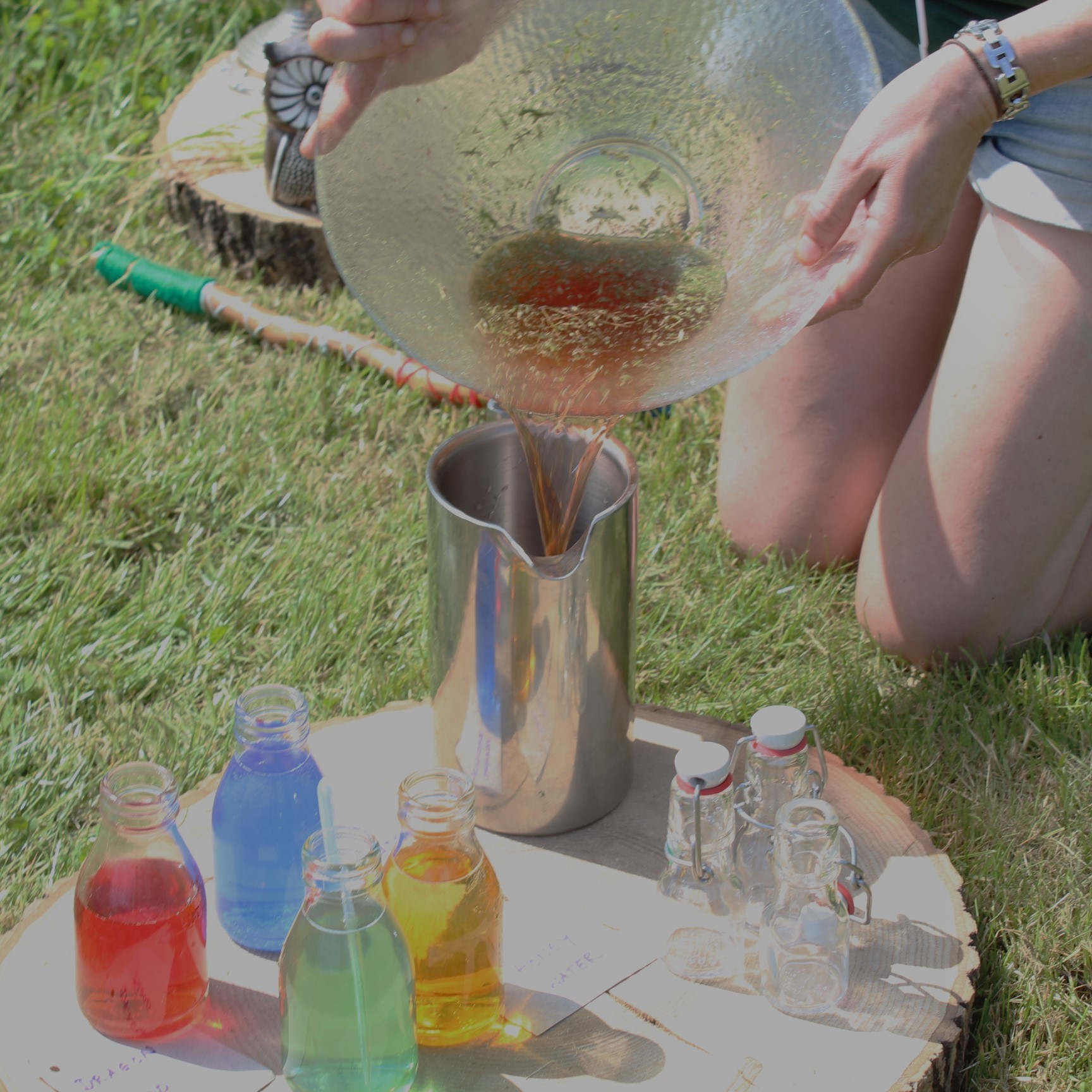
Greenhillock Glamping

Potions
Gather together some simple potions equipment and ingredients ready for class to begin. Thank goodness there are no scary Professors here at Greenhillock (unless you count Bryan of course!).
Step 1
Forage for dry ingredients
Try to gather things that have naturally fallen to the ground or are very abundant. If you are in the garden, perhaps you could ask if there is an area that needs weeding and combine the two.
In this picture you can see:
1. Eel Eye, used to make Bulgeye Potion and Eye of Newt, properties unknown
2. Gurdyroot, used in Love Potion antidotes (really grass seedheads)
3. Gillyweed, allows the user to grow gills and webbed fingers and toes (really grass)
4. Daisies, used to make Shrinking Solution
Mandrake or Mandragora
A powerfully magical ingredient used in a variety of potions including the Mandrake Restorative Draught. Stewed Mandrake also appears in Wiggenweld Potion, Oculus Potion and Volubilis Potion. Mandrake Root is used in the Pepperup Potion.
(Really this is groundsel which many people consider to be a weed. Although we don’t have weeds at Greenhillock, groundsel is very, very abundant so I didn’t feel too bad pulling a few out by the roots!)
Step 2
Grind or chop your ingredients
Using a pestle and mortar to grind knotgrass (commonly called knotweed by experienced potion makers), an important ingredient in Polyjuice Potion.
If you don’t have a pestle and mortar find a large flat stone and a smaller pointy stone and try grinding your ingredients between them. If all else fails you could chop them up with scissors or very carefully with a knife. Remember the more neatly you chop your ingredients the more effective your potion will be.
Step 3
Add your liquid ingredients
Using food dye, you can create all sorts of magical liquid ingredients. If you don’t have food dye you can use water or diluting juice instead.
In this picture you can see:
1. Bubotuber pus, has acne-ridding qualities and is an ingredient in the Healing Potion
2. Dragon’s blood, may be used as an oven cleaner, spot remover and a cure for verrucas
3. Basilik venom, used neat to destroy horcruxes, potions properties are unknown
4. Honeywater, used in the Wiggenweld and Volubilis Potions and the Antidote to Common Poisons

Mix dry and liquid ingredients together
If you have already made a wand you may wish to cast some incantations over your potion at this stage!
In this picture you can see ground gurdyroot, knotweed and gillyweed being added to dragon’s blood.
Tip your finished potion into a pouring jug
No witch or wizard wants their precious potion to be spilt all over the bench in the potions classroom when they have spent so much time preparing it. A useful pouring jug is an essential part of your potions kit.
Step 4
Pour out your potion
In this picture you can see the potion being poured into a small bottle but an old jam jar is just as good. Be sure to label it though, you don’t want to mistake it for strawberry jam.
Sieving is optional
It is up to you if you want to sieve out the dry ingredients of your potion. As you can see in this example I think my potions are more powerful when I leave the dry ingredients in!
End
The finished article
Rogus Restrictum in all its glory! It contains dragon’s blood, gillyweed, gurdyroot and knotweed and is extremely efficacious in the apprehension of those who are up to no good!